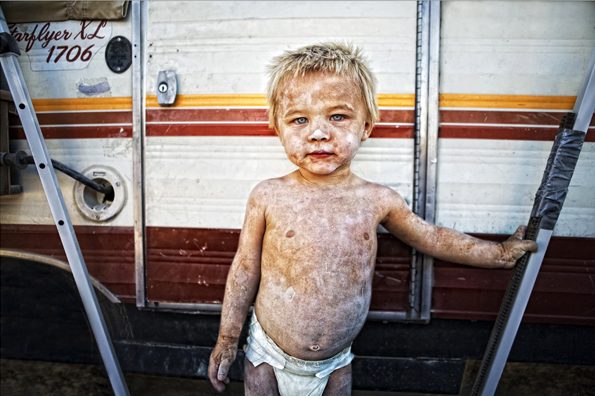Over the years I have had to learn many things “the hard way”. Hopefully, the below tips will help you in harsh environments.
Humidity: Let your camera acclimate to the ambient temperature
Comfortably cool in your plush hotel room at some tropical resort, you decide to take a trip outside to shoot the local flora. The instant you step outdoors, your camera fogs inside and out. Damn. Try putting your camera in a ziplock bag and putting it outside in the shade for 15 minutes before you charge out. The bag will keep the moisture away while your camera acclimates.
Humidity: Pack LOTS of desiccant
In any wet environment, the desiccant is your camera and electronics best friend. Imagine shooting all day in India, rushing back to download the day’s work, only to find that your laptop will not boot. Excitement quickly changes to a surge of dread and frustration (Yes, this happened to me.) Packing the laptop overnight into a moisture barrier bag with a bunch of desiccant was my only savior.
Desert: Never change your lens
When traveling to any arid environment, especially one prone to 80 mph dust storms (like Burning Man), plan ahead. Visualize your shots and choose a lens that will best suit your needs. Then, don’t take it off till you get home. Airborne dust particles can wreak havoc on your image sensor. Some of this also could be applied to your card. A 32gb should hold the daily shots, only to be changed/downloaded once the camera has been returned to your nightly shelter.

Desert: Clean it and Bag it
Bring lots of big heavy-duty ziplock bags. Literally, stuff some in every pocket. If a dust/sandstorm does make an appearance, throw the camera in a bag, zip it, and run for your shelter! When safe, grab a can of canned air and clean every nook. Follow this with a wet-wipe rubdown.
Cold: Keep your friends close. Keep your batteries closer.
And I mean really close (Inside your jacket, against your body). Even full batteries have a habit of dying in harsh freezing conditions. Don’t let them. If your camera dies, first try switching the battery with a warm one. You might even get a couple more shots out of the dead battery once it warms up again.

Cold: Beware of rapid temperature changes.
You have lost all feeling in your toes an hour ago. Your fingers are the color of a flamingo and have ceased their ability to press the shutter. It is time to pack it up and head for a warm room, a hot shower, and a drink. Don’t rush. Pay attention to rapidly changing temperatures. Moving from an intensely cold space into a warm room poses a variety of possible challenges from condensation to stress on the glass and electronics. Like in a humid environment, a ziplock bag full of cold air around your camera will help slow the thermal shock to your gear when brought inside.
Water: Universal housing
Durable waterproof camera housings are a necessity when shooting on or under water. I recommend EWA-Marine housings as they are durable, pressure tested, and versatile (such as a single housing can fit multiple types of DSLRs). These housings can also be used to protect your equipment in any harsh environment: desert, tundra, or rainforest.
Protect your gear in transit: Select an appropriate carrier
Regardless of where you travel, there is a camera bag made just right for you and your destination. Lowepro, for example, offers a variety of bags that include features such as weatherproofing, shock resistance, lightweight backpacks (for you mountaineering types!), and even low-profile messenger bags (for the Urban explorer who wants an inconspicuous camera bag.)

Travel Smart: A local guide could save your life
Blissfully shooting via kayak in northern British Columbia, I chose to (luckily) come ashore when I saw the waving arms of some frightened locals. Apparently, I had a near miss with a ship devouring a maelstrom.
In another instance, I accidentally meandered into the center of a dangerous drug zone in Salvador, Brazil only to be found and forcibly escorted out by the police. Scary? Yes. Preventable? Absolutely. Had I just hired a guide I would not only have been informed of the local dangers but there would be some accountability. Local guides are cheap, especially in developing nations (often only $5/day). Your life? Not so much.
Harsh environments are unpredictable and can wreak havoc on your travel plans and equipment. Being prepared and careful can be key to ensuring a positive experience.
Tell your story with the second annual Visual Storytelling Conference!
Experience four days of interactive, online training sessions featuring a range of educational content with experienced photographers and content creators. This free event kicks off with a series of technical boot camps to build essential skills, followed by live, online sessions on photography, video, business and social media. Join live from March 10-13, 2022!
